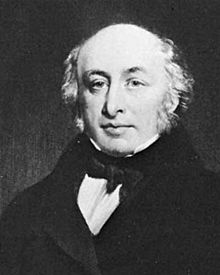James Justinian Morier facts for kids
Quick facts for kids
James Justinian Morier
|
|
|---|---|

Morier, portrait by an unknown artist
|
|
| Born | James Justinian Morier 15 August 1782 Smyrna, Ottoman Empire |
| Died | 19 March 1849 (aged 66) Brighton, England |
| Occupation | Novelist, diplomat |
| Notable works | The Adventures of Hajji Baba of Ispahan |
James Justinian Morier (born August 15, 1782 – died March 19, 1849) was a British diplomat and writer. He is best known for his exciting novels about the Qajar dynasty in Iran. His most famous books are the Hajji Baba series, which were even made into a movie in 1954.
Contents
Early Life and Education
James Morier was born in Smyrna, a city in the Ottoman Empire (which is now part of Turkey). His father, Isaac Morier, was a merchant from Switzerland who became a British citizen. James went to school in England. After finishing his studies, he worked in his father's business in Smyrna from 1799 to 1806.
A Career in Diplomacy
Working in Iran
Thanks to his uncle, Admiral William Waldegrave, 1st Baron Radstock, James Morier joined the diplomatic service. This meant he would represent Britain in other countries.
He first visited Iran in 1808. He went as a secretary to Harford Jones-Brydges, who was a special British envoy (a type of diplomat) sent to meet the Shah (the ruler of Iran). Morier wrote a book about his travels and experiences, which was published in 1812. It was called A Journey through Iran, Armenia and Asia Minor to Constantinople in the years 1808 and 1809.
In 1809, he traveled back to Britain with the Iranian envoy, Mirza Abul Hasan. Then, in 1810, Morier returned to Iran. This time, he was the Secretary of Embassy for Sir Gore Ouseley, who was the first British Ambassador to Iran. Morier stayed in Iran until 1816, even serving as the top diplomat (called Chargé d'Affaires) for some time. After he came back to England, he published another book about his travels.
Diplomatic Mission to Mexico
James Morier married Harriet Fulke Greville in London in 1820. A few years later, from 1824 to 1826, he took on a special role in Mexico. He worked to create an important agreement between Britain and Mexico. This agreement, called the British-Mexican Treaty of Amity, Commerce and Navigation, was officially approved in 1827. It helped Britain and Mexico become friends and trade partners.
Writing Exciting Novels
James Morier knew a lot about life and customs in Eastern countries because of his travels. This knowledge helped him write many fun and interesting novels.
His most popular books were The Adventures of Hajji Baba of Ispahan (published in 1824) and its follow-up, The Adventures of Hajji Baba of Ispahan in England (published in 1828). The first book is a bit like the famous story Gil Blas, but it's set in Persia (which is now Iran). It's said that the Persian minister in England even complained about the book because of how it described his country!
Morier wrote other novels too, like Zohrab the Hostage (1832), Ayesha the Maid of Kars (1834), and The Mirza (1841). These books were full of amazing descriptions, interesting characters, and clever humor. He also wrote several other books that were not as well known.
- The Adventures of Hajji Baba of Ispahan (1824)
- The Adventures of Hajji Baba of Ispahan in England (1828)
Later Life and Legacy
James Morier passed away suddenly in Brighton on March 19, 1849. His wife died in London a few years later in 1858.
Hajji Baba's Lasting Impact
The The Adventures of Hajji Baba is an American movie from 1954. It was based on James Morier's popular Hajji Baba novels.
The name "Hajji Baba" was also used for a real-life event. In 1952, the US Air Force carried out a humanitarian airlift operation called Operation Hajji Baba. This mission helped people, and its name came from Morier's famous books.
James Morier is also known for bringing a new word into the English language: "bosh". This word means "absurd" or "foolish talk." It comes from the Turkish word boş, which means "empty."
In 1842, a botanist named Boiss. named a group of flowering plants after James Morier. This group of plants, called Moriera, is found in Central Asia and belongs to the Brassicaceae family.

